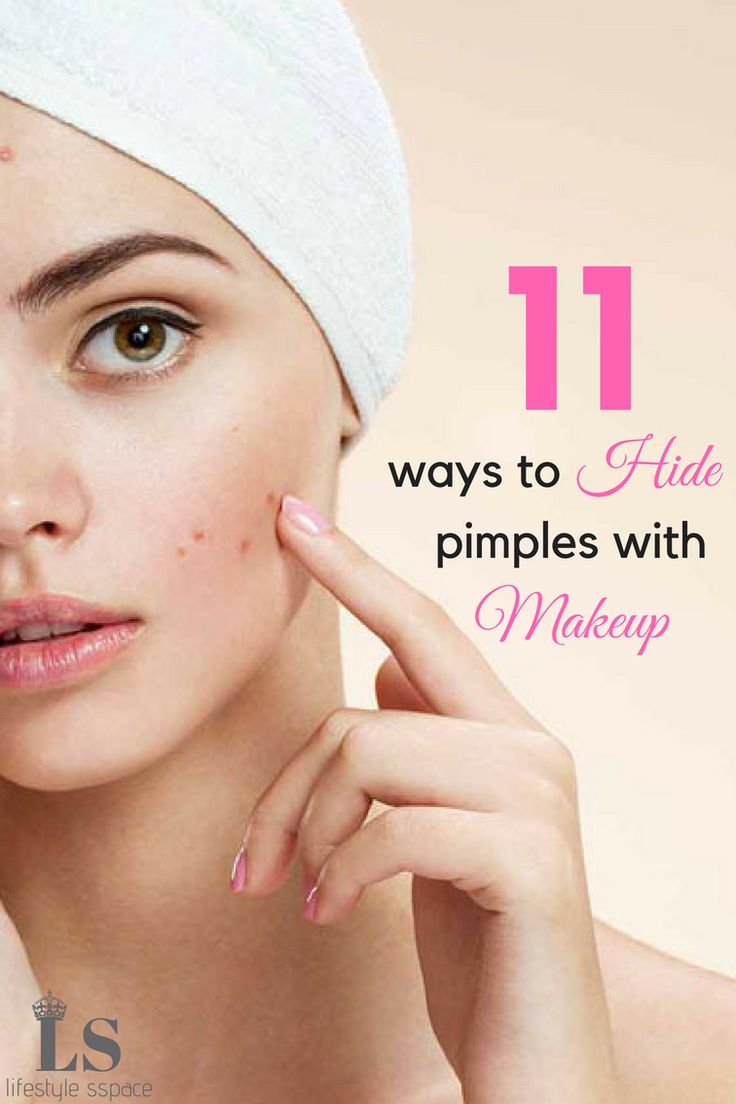Dealing with pimples can be frustrating, especially when you want your skin to look flawless. Fortunately, with the right makeup techniques and products, you can effectively hide those blemishes and feel confident in your skin. In this blog post, we’ll explore various makeup methods tailored to your skin type, ensuring you look and feel your best, no matter what. Let’s dive into how understanding your skin can make a world of difference in achieving that perfect look!
Understanding Your Skin Type

Before you embark on your journey to hide those pesky pimples, it's crucial to know your skin type. Not all makeup products work well with every skin type, and using the wrong formulas can lead to more breakouts or an uneven complexion. Here’s how to identify your skin type and select the best makeup for it:
- Oily Skin: If your face tends to shine throughout the day and you notice enlarged pores, you likely have oily skin. For this type, opt for oil-free and matte-finish foundations and powders. Look for ingredients like salicylic acid that help combat acne.
- Dry Skin: If your skin feels tight or flaky, especially after washing, then it's on the dry side. For dry skin, choose hydrating foundations with a dewy finish, and don’t forget to use a good moisturizer underneath your makeup to take away any dryness.
- Combination Skin: This means you may have an oily T-zone (forehead, nose, chin) while the cheeks are dry. A balanced approach works best; you might like a lightweight foundation that controls shine but still provides moisture.
- Sensitive Skin: If you experience redness, irritation, or allergies, you probably have sensitive skin. Stick to hypoallergenic, fragrance-free formulas and test new products on a small area of skin before full application.
- Normal Skin: Normal skin doesn’t often flare up or feel tight. Lucky you! You can experiment with various foundations and finishes, but always make sure to choose a product that feels comfortable and blends seamlessly.
Once you’ve identified your skin type, you can make informed choices about the best makeup products and techniques that will not only hide those pimples effectively but also care for your skin in the long run!
Also Read This: Maximize Your Reach by Reposting on LinkedIn
Choosing the Right Makeup Products
When it comes to hiding pimples with makeup, choosing the right products is absolutely crucial. Not all makeup is created equal, especially when you're trying to achieve that flawless look. Here are some key factors to consider:
- Non-comedogenic formulations: Opt for makeup labeled as non-comedogenic, meaning it won't clog your pores. This is super important because the last thing you want to do while trying to hide a pimple is to create new ones!
- Full coverage foundation: Look for foundations that offer full coverage to effectively conceal blemishes. Stick foundations or cream formulas often provide better coverage than liquid foundations.
- Pore-filling primers: A good primer can smooth out the skin's surface and create a barrier between your skin and makeup. This helps fill in any texture from pimples, making the skin appear smoother.
- Concealer: Choose a high-coverage concealer with a creamy texture. Creamy concealers tend to blend better over blemishes and provide that extra coverage when needed.
- Setting powder: A good translucent setting powder can help to lock everything in place and control shine, which is key for a lasting finish.
Don’t forget about the importance of color! For redness around pimples, consider using a green color corrector before applying your foundation. Remember, trial and error is part of the process, and everyone’s skin is different, so take the time to find what works best for you!
Also Read This: How to Use Stick Foundation for a Natural Look with Ease
Step-by-Step Makeup Application
Now that you've got the right products in hand, it’s time to put everything into action! Here’s a simple, effective step-by-step guide to applying makeup that hides pimples:
- Prep Your Skin: Start with a clean face. Apply a soothing moisturizer that won’t clog your pores. Give it a few minutes to absorb.
- Prime Your Skin: Apply a pore-filling primer all over your face or only on the areas with blemishes. This creates a smooth canvas for your makeup.
- Apply Foundation: Use a makeup sponge or foundation brush to apply your full coverage foundation. Start in the center of your face and blend outwards. Don’t forget to use a stippling motion over areas with pimples for better coverage.
- Conceal Problem Areas: Using a small brush, apply your high-coverage concealer directly onto the pimple and around the redness. Tap it gently with your fingertip for a seamless finish.
- Set Your Makeup: Lightly dust translucent setting powder over your face, focusing on the areas where you've applied concealer to lock it in place. This helps to avoid any creasing.
- Finish Up: Complete your look with blush, bronzer, and highlighter. Use gentle motions to avoid disrupting the makeup you’ve just applied.
And there you have it! Follow these steps, and you'll be on your way to confidently rocking your makeup while keeping those pesky pimples out of sight!
Also Read This: Embedding YouTube Videos in Canva for Creative Projects
Additional Tips for Long-Lasting Coverage
When you're battling breakouts, the right makeup techniques can make all the difference. But to ensure your hard work stays in place and continues to look flawless throughout the day, follow these helpful tips for long-lasting coverage:
- Start with a Clean Canvas: Always begin with a clean, moisturized face. Use a gentle cleanser and follow up with a lightweight moisturizer. This helps your makeup adhere better and prevents it from clinging to dry patches.
- Use a Primer: Opt for a mattifying primer if you have oily skin, or a hydrating primer if you have dry skin. A good primer smooths imperfections and prolongs the wear of your makeup.
- Choose the Right Formula: When selecting foundation, look for non-comedogenic options that won’t clog pores. Liquid foundations typically provide better coverage, but consider a powder foundation if you prefer a lighter feel.
- Set with Powder: After applying liquid products, use a finely milled translucent setting powder to lock everything in place. Focus on areas that tend to get oily, like your T-zone.
- Use Setting Spray: A setting spray can be your best friend for all-day wear! After finishing your makeup, spritz a few pumps to help keep everything in check and combat shine.
- Avoid Touching Your Face: This one's crucial. Constantly touching or adjusting your makeup can lead to smudging and transfer. Try to resist the urge!
By following these additional tips, you’ll be well on your way to achieving a flawless complexion that stands the test of time—even on days when your skin isn’t cooperating.
Conclusion
Hiding pimples with makeup doesn’t have to be a daunting task. With the right techniques and tools in your arsenal, you can create a beautiful, blemish-free look that enhances your natural beauty. Here’s a quick recap of what we’ve covered:
- Start with a well-prepped canvas by cleansing and moisturizing.
- Use a targeted spot concealer for precision and color correction.
- Choose lightweight foundations and avoid heavy layers.
- Utilize bronzer and blush to bring your face back to life and distract from imperfections.
- Finish with setting techniques to ensure your makeup lasts all day.
Remember, while it’s perfectly fine to want to cover up blemishes, embracing your skin’s natural state is equally important. Makeup is simply a tool to enhance your features and boost your confidence. So next time a pesky pimple appears, don’t stress! Armed with these techniques, you’ll know just how to handle it.
Keep practicing and experimenting with different products to find what works best for you. After all, makeup is an art, and every artist has their unique style!
 admin
admin








